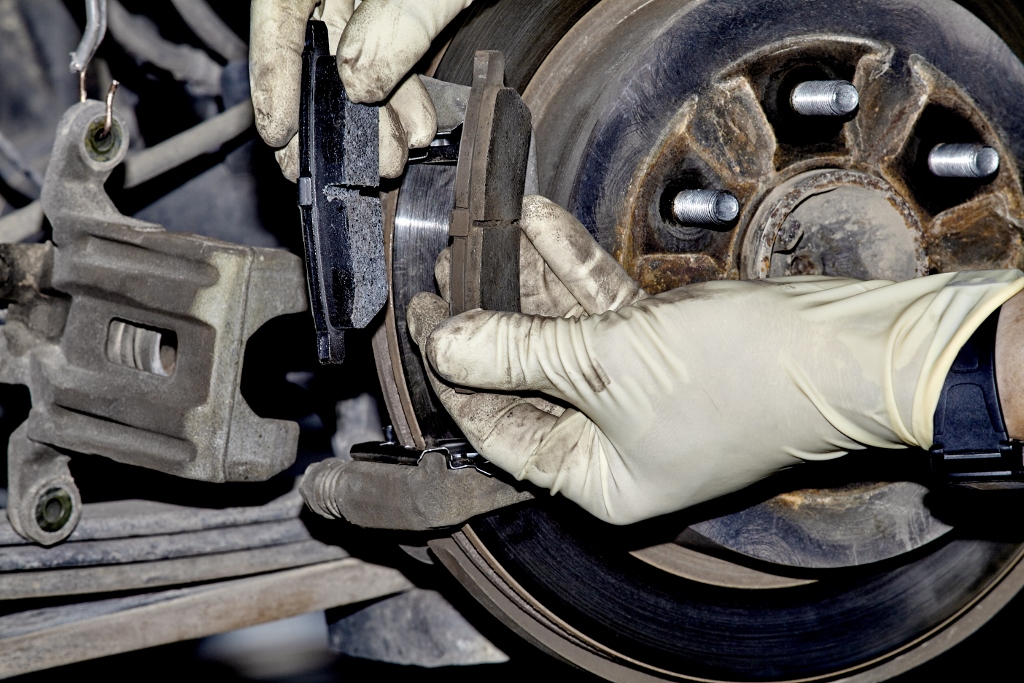 Being subject to considerable wear and tear, brake pads need to be periodically maintained and replaced. MANNOL UK, the fast-growing automotive and brake pads supplier, provides garages and technicians with a guide to the most likely causes of wear.
Being subject to considerable wear and tear, brake pads need to be periodically maintained and replaced. MANNOL UK, the fast-growing automotive and brake pads supplier, provides garages and technicians with a guide to the most likely causes of wear.
Issue: Even Wear
The pads have approximately the same amount of friction material on both.
Cause: Proper brake function.
Solution: Replacement of the brake pads and hardware such as abutment and anti-rattle clips is required, as well as servicing the caliper guide pins and slides.
Issue: Outer Pad Wear
The outer pad continues to ride on the rotor after the caliper releases, resulting in the outboard pad having markedly less friction material than the inboard pad.
Cause: Seizing guide pins, bushings and slides are usually the cause of the issue.
Solution: Correcting this issue is usually fairly straightforward, and is normally rectified by servicing or replacing the guide pins, bushings, or the entire caliper, and replacing the brake pads.
Issue: Inner Pad Wear
The inboard brake shows more wear than the outboard pad.
Cause: The caliper piston doesn’t return to the rest position due to a worn seal, damage, or corrosion; it can also be caused by a problem with the master cylinder.
Solution: Take the same steps as fixing the outer pad wear as well as inspecting the hydraulic brake system and the caliper for residual pressure and guide pin hole or piston boot damage, respectively. If the pin holes or piston boot are corroded or damaged, then replacement is necessary.
Issue: Tapered Pad Wear
The friction material is worn in a horizontal or vertical wedge pattern.
Cause: Improper pad installation as well as guide pin wear, or having a single guide pin or slide seizing.
Solution: The procedure for rectifying this kind of wear is the same as correcting outer pad wear.
Issue: Cracking, Glazing, or Lifted Edges on the Pads
The friction material is physically damaged and shows signs of thermal distress.
Cause: Overuse, improper break-in procedure, hydraulic system problems, seized caliper components, defective pads, and the parking brake not fully retracting are some common problems.
Solution: Replacing and breaking-in the new pads properly. The parking brake may also need adjusting.
Issue: Overlapping Friction Material
The top edge of the pad overlaps the top of the rotor.
Cause: Wear on the guide pins, caliper or caliper bracket or having the wrong rotor or pad on the vehicle.
Solution: Replace the pads and fit the vehicle with OE specification diameter rotors.
Find out more
For further information on MANNOL UK and its extensive product portfolio, please call 01908 320458 or email the team via sales@aslanol.co.uk. Alternatively, please visit www.mannol.co.uk. You can also contact the company via Twitter and follow @MannolUK to find out up-to-date news.
SCT-Germany Brake Pads: engineering innovation
Combining innovative materials and modern technology, SCT Germany offers an extensive range of high-performance brake pads as part of its commitment to bring competitively priced OE quality products to the aftermarket. Providing a wide number of vehicle applications and significant European car parc coverage, SCT Brake Pads also come with all required accessories, are free from heavy metals and are asbestos free.
For more information, interviews or images please contact:
Claire Brown or Kimberley Hornby, Hornby Whitefoot PR
Tel: 07787 505963 E-mail:claire@hornbywhitefootpr.co.uk
Tel: 01858 681122 E-mail: kimberley@hornbywhitefootpr.co.uk
